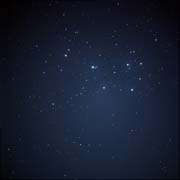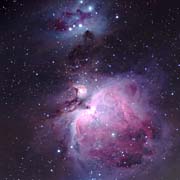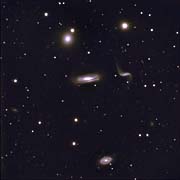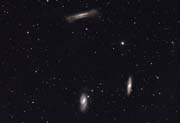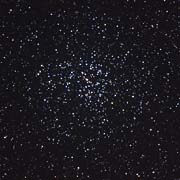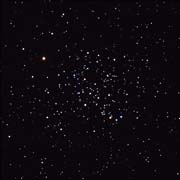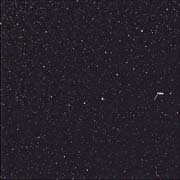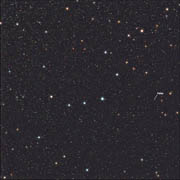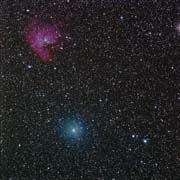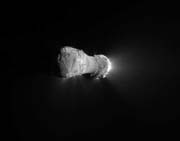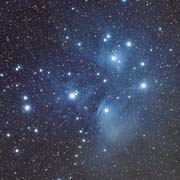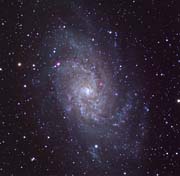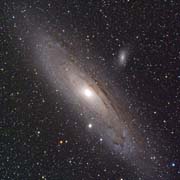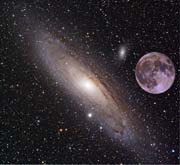A brief clearance on 14th January 2010 gave me first light with the new camera and I was able to capture a sequence of Messier 45 - the Pleiades or Seven Sisters.
The camera worked well enough, but on processing I found that the field was unevenly focussed. The light of day showed me that the drawtube (which was almost fully retracted to accommodate the AO-8 unit with the William Optics 0.8 reducer/flattener) on my 80 mm refractor was slightly tilted, so one side was approximately 1/2 mm different from the other - enough I presume to affect the focus across the big chip at the f4.8 ratio (f6 scope with 0.8 reducer). I've adjusted the slide bars and it looks better. Next try will tell....
8 x 5 minute subs, darks and flats applied. Obviously longer subs are required, but weather did not permit.
But a reasonably promising start. What is particularly heartening is that I was using the rig on my Autostar DS motor driven EQ3-2 mount. And the AO-8 was able to provide all the correction needed without adjusting the mount at all, indeed it was well within its limits. So an eminently portable system for medium to wide field imaging.
No point in supplying a full size image - the quality is very mediocre.
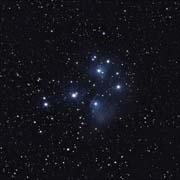
Postscript - on 30th January after a prolonged cloudy spell, a clear night, albeit with some high thin cloud.
Full Moon, so no chance of nebulosity, but a series of 5 minute exposures proved the focus adjustments to have been successful - much improved across the field, although still not perfect in the corners, but that is probably optical . The moonlight and haze accentuated the vignetting, but no point in applying flats etc. Same setup as before.
